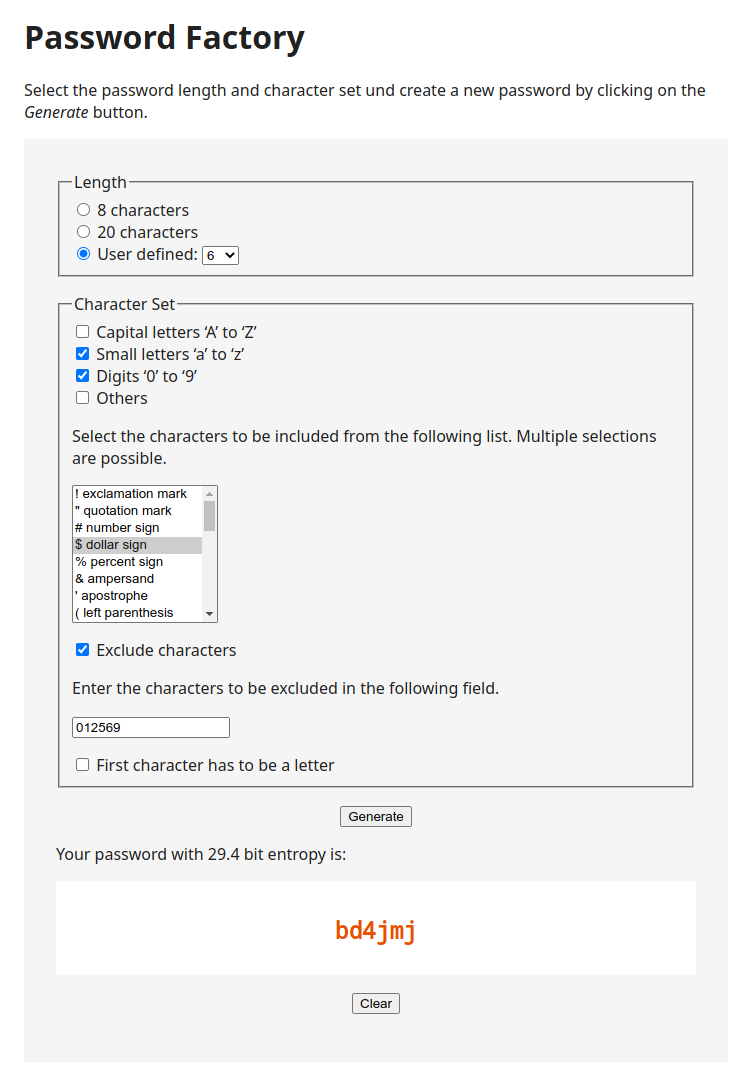A web service for generating random passwords.
The web service has a landing page so that the user can interact with the service. The contents and style of the landing page is fully customizable through an external HTML template.
Here is a screen shot of the landing page:
You can run the application manually or automatically during system startup. The source code distribution contains a template for a Systemd service.
Usage: password-factory [OPTION...]
The password factory application is a web service for generating random
passwords. After starting the program, open a web browser and visit
‘http://127.0.0.1:5776’ or ‘https://127.0.0.1:5777’. Sending the process
a HUP signal restarts the web service; a INT, QUIT, or TERM signal stops
the web service.
Options:
--http-port=NUMBER
Port number for the HTTP server. A value of zero
disables the HTTP server. Default is 5776.
--https-port=NUMBER
Port number for the HTTPS server. A value of zero
disables the HTTPS server. Default is 5777.
--ssl-certificate-file=FILENAME
SSL certificate file name for the HTTPS server.
Default is ‘example.pem’ in the current working
directory.
--ssl-private-key-file=FILENAME
SSL private key file name for the HTTPS server.
Default is ‘example.key’ in the current working
directory.
--non-local-http, --local-http
Whether or not to only listen on IP address 127.0.0.1
for HTTP requests. Enabled by default.
--redirect-http-to-https, --no-redirect-http-to-https
Whether or not to redirect all HTTP requests to HTTPS.
Disabled by default. This option only has an effect
if both protocols are enabled.
--document-root=DIRNAME
Top-level directory for the web servers. Default
is the current working directory.
--template-directory=DIRNAME
Top-level directory for HTML temmplate files.
Default is the current working directory.
--version Display version number information.
--help Display this help text.
